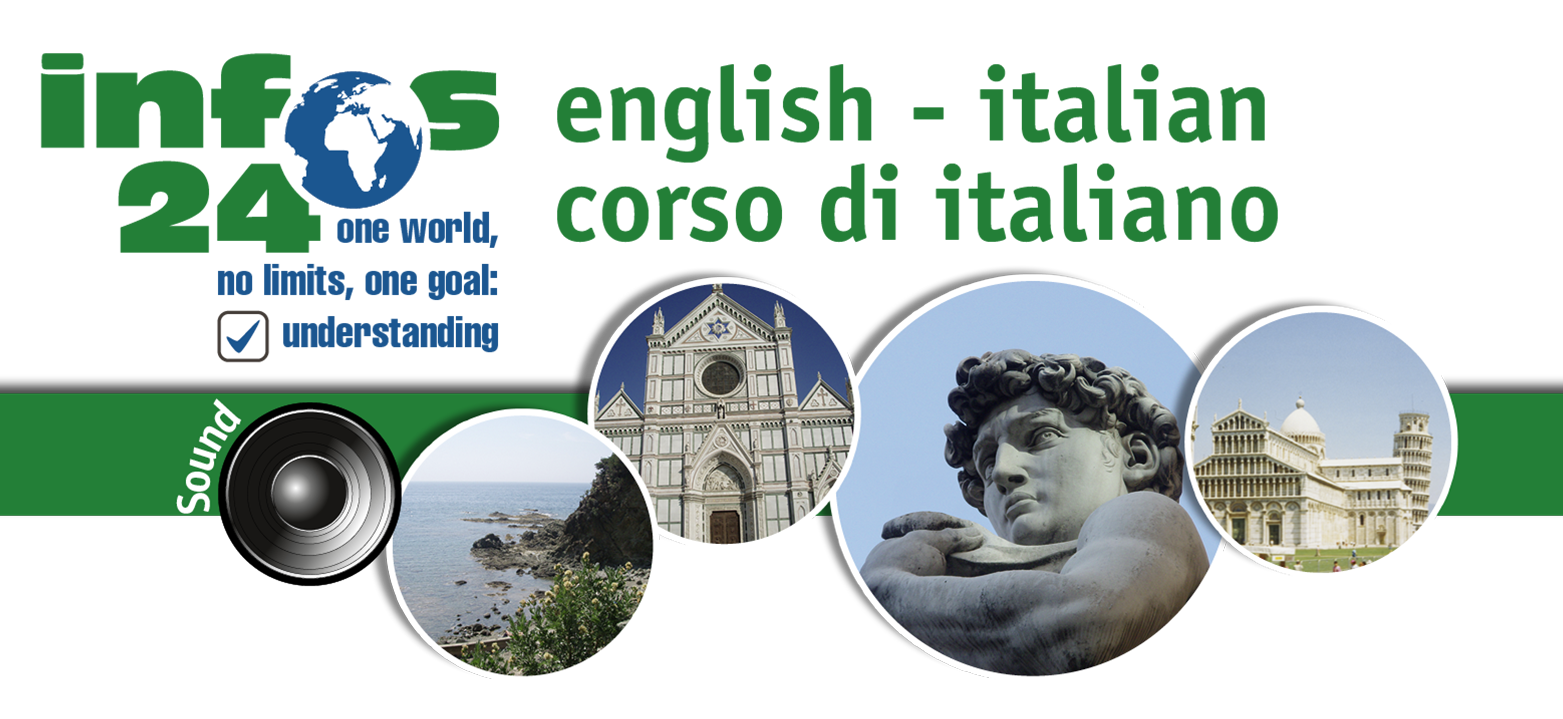
| 20.1 time data |
The description of the hour follows an easy to understand logic in Italian. To the full hours of the day are added or subtracted parts of an hour. It is therefore, with some differences, as in English. In English for instance the quarter missing to an hour is added (a quarter to five) in Italian it is subtracted (cinque meno un quarto).
| Sono le cinque e mezzo . | |
| It is half past five. | |
| Sono le due e un quarto. | |
| It is a quarter past two. | |
| Sono le quattro meno cinque. | |
| It is five minutes to five. | |
| È l'una e dieci. | |
| It is ten minutes past ten. | |
If we have a look at the form of essere in the last example we see that it is third person singular and not plural. This is logical because in the first sentence we have several hours, but in the last sentence we have only one hour. The hours are neither written nor pronounced in Italian (unlike French, where they are written and pronounced) they had disappeared with time. Nevertheless the verb refers to the nowadays inexistent
ora / ore.
| Sono le otte (ore) meno (un) quarto. | |
| It is a quarter to eight. | |
| Sono le undici (ore) e mezzo . | |
| It is half past eleven. | |
| È l'una (ora) meno venti. | |
| It is twenty minutes to one. | |
In English we use a.m for the time date between midnight and midday. For the time date between midday and midnight we use p.m.. In Italian we use adverbs to specify the part of the day a time date refers to.
| di mattina or del mattino (= morning), approximately between 4 o'clock in the morning until 12 o'clock. |
|
| di pomeriggio or del pomeriggio (= afternoon), approximately between 12 o'clock until 18 o'clock int the evening. |
|
| di sera (= evening), approximately between 18 o'clock until 23 o'clock | |
| di notte (= night), approximately between 23 o'clock until 4 o'clock | |
Instead of the feminine forms (mattina) we can use the masculine forms (mattino). If we use the masculine forms a definite article must be added.
| le dieci di mattina (or le dieci del mattino) = 10 o'clock in the morning | |
| le due di pomeriggio (or le due del pomeriggio) = 2 o'clock in the afternoon | |
| le dieci di sera = 10 o'clock in the evening | |
| le due di notte = 2 o'clock in the morning | |
The following table shows by example the formation of the time specification in Italian. Pay attention to the verb essere. If it is only one hour we use the third person singular (è) if there are several hours we use the third person plural (sono). If the time refers to the past we use the imperfetto. The article as well refers to the hour (sono le tre, but è la una).
| Sono / É Erano / Era |
full hours | + addition / substraction to the full hour |
time in digital writing | English | first / second part of the day |
| Sono | le tredici | meno quindici | 12:45 | a quarter to one | - |
| É | l' una | e cinque | 1:05 | five past one | di pomeriggio |
| Sono | le tre | meno cinque | 14:45 | a quarter to three | di pomeriggio |
| Erano | le cinque | meno venitcinque | 4:35 | twenty-five to 5 | di mattina / del mattino |
| Era | l'una | e venti | 1:20 | twenty past one | di mattina / del mattino |
| Sono | le tre | e un quarto | 3:15 | fifteen past three | di pomeriggio |
| Sono | le quattro | e mezzo | 16:30 | half past four | di pomeriggio |
| Sono | le nove | e mezzo | 21:30 | half past nine | di sera |
| Sono | le dieci | e un quarto | 10:15 | a quarter past ten | di mattina / del mattino |
We see that the verb to be (è / sono, era / erano, etc.) as well as the article (le / l') refers to the hours, nowadays neither written nor spelled. For the same reason we have to use the feminine form of uno ("Era l'una e mezzo ").
| contact privacy statement imprint |